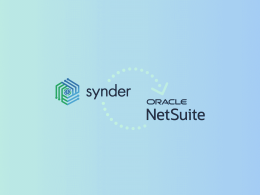According to the Cost of a Data Breach Report 2023, 80% of businesses reported that they’d suffered a data breach. The main target of such attacks is to acquire customer personally identifiable information (PII).
Unauthorized access through privileged requests can be prevented through the implementation of Just-In-Time (JIT) Access in privileged access management. In this post, we’re going to explore what just-in-time access or JIT access is. We’ll also dive into how it can enhance your organization’s security posture and offer protection against data breaches.
Contents:
1. Data security and just-in-time access
2. Introduction to just-in-time access in cybersecurity
3. The principles of just-in-time access
4. Benefits of implementing just-in-time access strategies
5. Role-based access control vs. just-in-time access
6. How just-in-time access minimizes insider threats
7. Best practices for integrating just-in-time access in your infrastructure
8. Overcoming potential challenges with just-in-time solutions
9. Successful implementation of just-in-time access
10. Future trends in justin-time access and data security
Data security and just-in-time access
Data security is becoming increasingly important in today’s digital world. The need to protect sensitive information from unauthorized access and potential breaches has compelled organizations to adopt robust security measures. Among these measures, just-in-time access stands out as a practical solution that not only enhances data security but also provides efficient management of user permissions. You’ll need to determine whether a residential proxy, data center proxy, or mobile proxy will better suit your needs.
Introduction to just-in-time access in cybersecurity
Just-in-time access is a security practice that is pivotal in the realm of cybersecurity. It works by monitoring high-risk accounts and tightly controlling access to sensitive information to prevent hackers from exploiting it. By implementing JIT access, users will receive temporary access to the system and have that access revoked when it’s no longer needed. This approach minimizes security risks and significantly enhances data protection.
Just-in-time access is a concept that focuses on granting users temporary and specific access privileges based on their immediate needs. This approach enhances data security by reducing the risk of unauthorized access and potential breaches. With just-in-time access, organizations can minimize the exposure of sensitive information to unauthorized individuals, ensuring that only those who require access for legitimate reasons are granted permission.
Furthermore, just-in-time access offers efficient management of user permissions within an organization. By providing users with temporary privileges for a limited period, organizations can streamline their operations and avoid unnecessary administrative work associated with managing long-term permissions. This approach also ensures that user permissions align with their current roles and responsibilities, avoiding any potential misuse or abuse of privileges.
In summary, the concept of just-in-time access not only enhances data security but also provides efficient management of user permissions within organizations. It reduces the risk of unauthorized data exposure while allowing for smooth operations by granting users temporary and specific access privileges based on their immediate needs. Adopting this practical solution improves overall data protection in today’s digitally driven world.
The principles of just-in-time access
To enhance our security posture and access management and control, we’ll dig into the core principles of just-in-time access. These are role-based access, time-limited access, and the least privilege principle.
Role-based access
- Simplify access management by only giving permissions based on job roles or responsibilities.
- Minimize risk by making sure people only have the resources needed for their tasks.
Time-limited access
- Prevent unauthorized access by limiting information access to specific time windows.
- Reduce exposure to potential threats by automatically cutting off access when it’s no longer needed.
Least privilege principle
- Limit what’s given to individuals to just what they need for a single task with the least privilege principle.
- By embracing this approach, you can reduce the potential damage from insider threats or accidental misuse.
Better security
When you have a strong wall around one of the critical parts of the network device or critical system of your organization, it gets harder for attackers to get in. And that’s the goal here – to deter malicious attacks and prevent compromises. This method ensures they won’t even get close.
Efficient resource allocation
This access technique can also help with how resources are distributed. Unlike most methods that grant indefinite, unlimited access to everyone, this approach provides access privileges and allows users to request access only when a specific resource is needed.
This no-approval process leaves zero trust, critical vulnerabilities, and no burden on IT departments and ensures a smooth operation with no need for human intervention.
Compliance and auditing
Many companies are concerned about encountering legal or financial issues. However, by monitoring activities within your privileged account management, including end-user and administrator accounts, and promptly revoking access when necessary, you can effectively avoid such problems, including secure access to online videos.
In addition to monitoring privileged account access and activities, it’s important to track non-privileged access, access activities of all accounts, including end users, and store this information securely using just-in-time access.
Role-based access control vs. just-in-time access
Role-based access control (RBAC) and just-in-time access are two popular approaches to enhancing data security. RBAC operates on the principle that user permissions should be based on their roles within an organization. This means that users are assigned specific roles, such as administrator or supervisor, which determines the level of access they have to different resources and data within the organization. RBAC can provide a structured framework for access control, reducing the risk of unauthorized access by ensuring that users only have access to what’s necessary for their role.
On the other hand, just-in-time access takes a more dynamic approach to granting user permissions. Instead of assigning fixed roles and privileges, this method grants temporary access rights based on immediate needs.
Users are given permission to access specific resources or data for a defined period when they require it urgently. This reduces the possibilities of sensitive information being exposed or accessed by unauthorized personnel since permissions are granted in real-time and revoked promptly once no longer needed.
The choice between RBAC and just-in-time access depends on various factors such as organizational structure, complexity of operations, and risk tolerance levels. While RBAC offers a static but highly controlled approach towards managing user permissions, just-in-time access provides flexibility while maintaining adequate security measures in today’s fast-paced digital landscape where rapid changes occur frequently requiring quick adaptations in access control policies.
How just-in-time access minimizes insider threats
There are many ways in which JIT access minimizes insider threats. Let’s look into some of them:
- employee and privilege abuse
- credential protection and misuse
- abuse of their credentials by requesting temporary accounts for privileged activities
- use of privileged sessions
- temporary account management to access privileged sessions
- session management
- enhancing detection and response capabilities
Employee misuse prevention
To safeguard sensitive information, the high risk of employee misuse of the principle of least privilege and access is mitigated by granting permanent access only when necessary.
This will let organizations minimize opportunities for employees to abuse their privileges or misuse limited access. Their principle of least privilege access credential and granted access request is like having a bouncer at a club who is always on access and only lets people in if they need to be there.
Detection and response
The real-time monitoring feature included in just-in-time access allows organizations to stay on top of what goes on at all times. With this ability, any unusual activities and breaches are met with immediate responses that ultimately prevent potential damage. Think of this feature as a lock on a door that alerts you whenever someone tries picking the lock.
Best practices for integrating just-in-time access in your infrastructure
- Find what matters most: Identifying which system assets are critical to your organization and need the highest level of security. Then, apply just-in-time access principles to them. This will create a strong layer of protection by giving them access controls.
- Selecting the best tools: Your choice of tools matters; pick the right ones that can seamlessly support just-in-time access and integrate them into existing infrastructures.
- Teach your team: Conduct training for your team that goes over fundamental principles and the importance of just-in-time access.
- Regular checks: Implement regular audits to review and update access control. This makes sure your organization is keeping up with its evolving needs.
Overcoming potential challenges with just-in-time solutions
Some of the challenges that you might face when implementing JIT principles include user resistance, technical compatibility, and monitoring complexity. Let’s look into how we can overcome these challenges.
User resistance
- Some employees may not be too fond of this new system. You can help them get used to it by offering training and clear explanations of the benefits of just-in-time access.
- Show how the new system makes things easier and faster to use.
Technical compatibility
- Make sure that your existing systems are compatible with the just-in-time access solutions that you’re going to use.
- Conduct a thorough compatibility assessment so that there won’t be any new surprises during integration.
Monitoring complexity
- Real-time monitoring might seem complex, but investing in user-friendly tools and processes can simplify this aspect by a lot.
- Having these tools can make the process smoother and give you easy-to-understand data and alerts.
Successful implementation of just-in-time access

Case studies have demonstrated the successful implementation of just-in-time access in enhancing data security within organizations. In these studies, organizations have reported notable improvements in their ability to protect sensitive information from unauthorized access and potential breaches.
Just-in-time access has been praised for its practicality as it allows organizations to grant temporary access privileges to users based on their immediate needs. This approach minimizes the risk of unauthorized data exposure and ensures smooth operations within an organization.
The case studies also highlight the efficiency of just-in-time access in managing user permissions. By granting temporary privileges, organizations can closely monitor and control who has access to sensitive data at any given time. This eliminates the need for permanent or long-term assignments of access privileges, reducing the chances of compromised credentials leading to data breaches.
Moreover, just-in-time access enables organizations to streamline their permission management processes, saving time and resources while ensuring that only authorized personnel have appropriate levels of data accessibility.
Overall, these case studies emphasize that just-in-time access serves as a practical solution for enhancing data security without compromising operational efficiency. Its success lies in providing secure and efficient management of user permissions by granting temporary access based on immediate needs. As more organizations prioritize robust security measures, implementing just-in-time access can be a crucial step towards safeguarding sensitive information from unauthorized threats in today’s digital world.
Future trends in justin-time access and data security
In the future, just-in-time access is expected to play a crucial role in enhancing data security. With rapid advancements in technology and an ever-evolving threat landscape, organizations will need to adopt more dynamic approaches to safeguard their sensitive information. Just-in-time access allows for a granular control over user permissions, ensuring that employees only have access to the data they need at a particular moment. This minimizes the potential impact of insider threats and unauthorized access, as users are granted temporary privileges based on their immediate requirements.
Furthermore, just-in-time access offers efficient management of user permissions. Instead of granting permanent access rights to individuals or teams, organizations can dynamically assign and revoke privileges in real-time. This approach reduces administrative burden by eliminating the need for manual permission changes whenever roles or responsibilities evolve within an organization. Moreover, it increases operational efficiency by providing employees with timely access while maintaining strict controls over data security.
As organizations continue to face constant challenges and threats regarding data security, implementing just-in-time access will be a vital component of their overall cybersecurity strategy. By effectively managing user permissions and reducing the risk of unauthorized access, this approach enables streamlined operations while ensuring robust protection against data breaches and cyberattacks.
Conclusion
If you’re looking for a great cybersecurity strategy that doesn’t sacrifice convenience to protect your information, then just-in-time access is the way to go. It enhances data security and minimizes insider threats.
In this blog post, we learned about the principles and best practices related to just-in-time access. By following them, you can effectively do your part to protect sensitive information and your IT infrastructure. As time goes on and threats change, it’ll become valuable to you because it’s so flexible and resilient. It’ll always be an invaluable asset when approaching security in our digital world.

.png)




